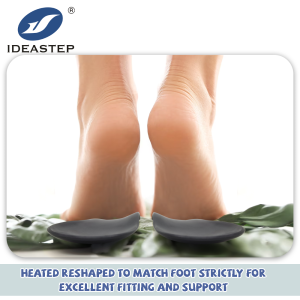Investing in diabetic insoles is crucial for effective foot care, especially for those with diabetes who are at risk of foot complications. This article examines how much one should invest in diabetic insoles to ensure they provide adequate protection, comfort, and support, discussing factors influencing the cost and the value of investing in high-quality options.
Introduction
Diabetic insoles are essential for individuals with diabetes to manage foot health effectively and prevent complications. They provide support, cushioning, and protection, which are critical for preventing issues such as ulcers and neuropathy. However, the question arises: how much should one invest in diabetic insoles to achieve the best results? This article delves into the factors that influence the cost of diabetic insoles and provides guidance on making a worthwhile investment.

Understanding Diabetic Insoles
Diabetic insoles are specially designed to meet the needs of people with diabetes. They offer features that help mitigate common foot problems associated with diabetes, such as poor circulation and neuropathy.
Key Features of Diabetic Insoles
– **Cushioning**: Provides comfort and reduces pressure on sensitive areas.
– **Arch Support**: Helps to distribute weight evenly and reduce strain on the feet.
– **Moisture Management**: Keeps feet dry to prevent infections.
– **Shock Absorption**: Minimizes impact on the feet during walking or standing.
Factors Influencing the Cost of Diabetic Insoles
The cost of diabetic insoles can vary widely based on several factors. Understanding these factors can help you make an informed decision about how much to invest.

1. Material Quality
– **High-Quality Materials**: Premium materials like memory foam, gel, or advanced polymer blends often result in higher costs but offer superior comfort and durability.
– **Durability**: Higher-quality materials generally last longer, providing better long-term value.
2. Customization
– **Custom-Made Insoles**: Tailored to the specific shape and needs of the individual, custom insoles are usually more expensive but provide a better fit and greater comfort.
– **Off-the-Shelf Options**: Pre-fabricated insoles are generally more affordable but may not offer the same level of support or comfort as custom options.
3. Brand and Manufacturer
– **Reputation**: Established brands with a strong reputation for quality often charge more for their products.
– **Research and Development**: Companies investing in R&D to enhance the effectiveness of their insoles may have higher prices.
4. Features and Technology
-**Advanced Features**: Insoles with additional features such as temperature regulation, enhanced arch support, or anti-microbial properties can be more expensive.
– **Technology Integration**: Some insoles incorporate technology like sensors for tracking foot health, which can drive up the price.

Assessing Value for Money
When deciding how much to invest in diabetic insoles, it’s important to consider the value you are getting for the cost. Here are some factors to consider:
1. Personal Needs and Foot Health
– **Specific Requirements**: If you have unique foot conditions or severe symptoms, investing in higher-quality or custom insoles might be necessary for adequate support and comfort.
– **Long-Term Benefits**: Consider the long-term health benefits of investing in high-quality insoles, such as reducing the risk of foot complications and improving overall comfort.
2. Comparing Options
– **Evaluate Different Brands**: Compare features, materials, and prices of different brands to find the best fit for your needs.
– **Read Reviews**: Look for user reviews and testimonials to gauge the effectiveness and durability of different insoles.
3. Consulting with Healthcare Professionals
-**Expert Advice**: Consult with a podiatrist or healthcare provider to get recommendations tailored to your specific foot health needs.
– **Personal Assessment**: A professional assessment can help determine whether you need custom insoles or if a high-quality off-the-shelf option would suffice.

FAQ
1. Are more expensive diabetic insoles always better?
Not necessarily. While higher-priced insoles often use better materials and offer more features, it’s important to consider your specific needs and the value of the insoles in relation to your health requirements.
2. How often should diabetic insoles be replaced?
The lifespan of diabetic insoles varies depending on the material and usage. Generally, they should be replaced every 6 to 12 months or sooner if they show signs of wear and tear.
3. Can I use regular insoles instead of diabetic insoles?
Regular insoles may not provide the specialized support and features needed for diabetic foot care. Diabetic insoles are specifically designed to address issues such as pressure points and circulation problems.

Conclusion
Investing in diabetic insoles is crucial for maintaining foot health and preventing complications for individuals with diabetes. While the cost of insoles can vary based on material quality, customization, and brand, it’s essential to weigh the benefits against the price. By considering personal needs, comparing options, and consulting healthcare professionals, you can make an informed decision and invest in insoles that offer the best value for effective foot care.



